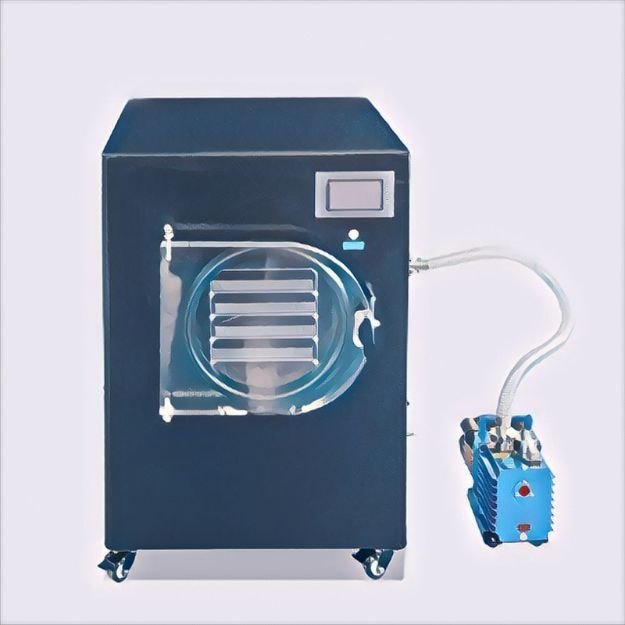🌬️ The Freeze Dryer: Unlocking the Power of Preservation 🌬️
Have you ever wished to extend the lifespan of your favorite foods, preserve seasonal produce, or create lightweight meals for your outdoor adventures?
Look no further than the incredible innovation of the freeze dryer!
This remarkable device takes food preservation to a whole new level, allowing you to capture the freshness, flavors, and nutrients of various ingredients in a lightweight and long-lasting form.
Join us as we dive into the fascinating world of freeze-drying and uncover the endless possibilities it offers for culinary enthusiasts, survivalists, and anyone seeking to make their food go the extra mile.
Get ready to embark on an exciting journey as we explore the wonders of the freeze dryer and its transformative impact on the way we store and enjoy food. 🌽🥕🍓🍗🥦✨
Definition: Freeze Dryer
These innovative appliances are specifically crafted to freeze, dehydrate, and preserve a wide array of foods, ensuring that their taste and nutrients are locked in for an extended duration.
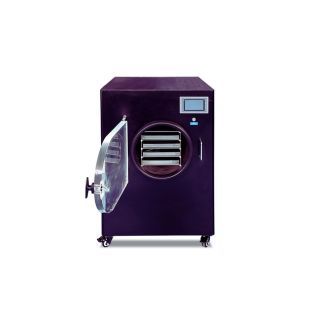
The "How"
But how does it accomplish this? ...
By utilizing a fascinating method known as lyophilization. This involves freezing the food and subsequently decreasing the surrounding pressure, enabling the frozen water within the substance to transition directly from a solid state to a gaseous state through sublimation.
The Difference
The main difference between food dehydrators and freeze dryers lies in the method used to remove moisture from food.
- Food dehydrators work by circulating warm air around the food, gradually removing the moisture through evaporation.
- Freeze dryers use a process called lyophilization. The food is first frozen and then placed in a vacuum chamber. The pressure is reduced, and the frozen water in the food sublimates, transforming directly from a solid to a gaseous state. This removes the moisture without causing significant damage to the food's structure, taste, or nutrients.
Freeze drying is a longer and more complex process, typically taking several days to complete. It is often used for preserving delicate foods like fruits, vegetables, meats, and even complete meals.
In summary, while both food dehydrators and freeze dryers remove moisture from food, food dehydrators use warm air to evaporate the moisture, while freeze dryers utilize the sublimation of frozen water to achieve the same result.
Freeze drying tends to preserve the quality of the food better but is a more time-consuming and expensive process compared to traditional dehydration.
On Shelf-Life
The shelf life of freeze-dried food is typically longer compared to dehydrated food. Freeze-dried food can last anywhere from 25 to 30 years or even more when properly stored in airtight containers with minimal exposure to moisture and light.
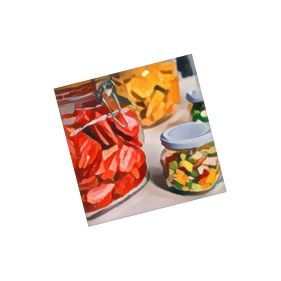
This extended shelf life is due to the removal of moisture, which inhibits the growth of bacteria, mold, and yeast that cause spoilage.
*However, it's important to note that the quality of freeze-dried food may gradually deteriorate over time, affecting its taste and texture.
In contrast, dehydrated food typically has a shorter shelf life compared to freeze-dried food. Dehydrated food can last anywhere from several months to a year or two, depending on the specific food item and storage conditions.
While dehydration removes a significant amount of moisture, it doesn't eliminate it entirely like freeze-drying does.
*This residual moisture can lead to a shorter shelf life and make dehydrated food more susceptible to spoilage, especially if not stored properly in airtight containers in a cool, dark, and dry place.
It's important to remember that these are general guidelines, and the actual shelf life of both freeze-dried and dehydrated food can vary depending on factors such as the type of food, packaging, storage conditions, and the presence of any additives or preservatives.
*Always check the specific recommendations provided by the manufacturer for each product to ensure optimal shelf life.
Food to Freeze-Dry
When it comes to freeze-drying, certain foods lend themselves particularly well to this preservation method. Here are five examples of foods that are commonly considered excellent choices for freeze-drying:
Fruits: Many fruits, such as berries (strawberries, raspberries, blueberries), bananas, apples, and mangoes, freeze-dry beautifully.
*They retain their natural flavors, colors, and nutritional content, making them a popular choice for snacks, toppings, or rehydrated additions to meals.
Vegetables: Various vegetables can be successfully freeze-dried, including corn, peas, carrots, bell peppers, and green beans.
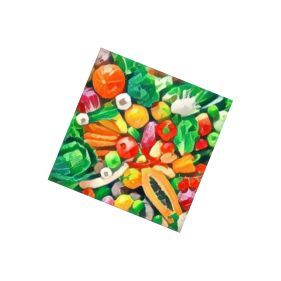
*Freeze-dried vegetables are convenient for adding to soups, stews, or backpacking meals, as they retain much of their original flavor and nutritional value.
Meat: Meats like chicken, beef, turkey, and even seafood (shrimp, fish) can be freeze-dried, resulting in lightweight and long-lasting protein sources.
*Freeze-dried meats can be rehydrated to their original texture and used in various dishes or consumed as snacks during outdoor activities.
Dairy products: Certain dairy products, such as cheese and yogurt, can be freeze-dried. Freeze-dried cheese can be crumbled or powdered, making it a versatile ingredient for recipes or a tasty topping.
*This process allows for longer shelf life and easy storage without the need for refrigeration.
Instant meals: Complete meals consisting of different components like rice, pasta, vegetables, and proteins can be freeze-dried.
*It's done to create convenient, lightweight, and long-lasting meals for camping, emergencies, or quick on-the-go options.
**Remember, while these foods are generally well-suited for freeze-drying, it's essential to follow proper procedures and guidelines to ensure food safety and optimal results.
These Don't Freeze-Dry Well
While many types of food can be freeze-dried, there are a few exceptions. Some foods that do not freeze-dry well include:
High-fat content foods: Foods with high fat content, such as butter, oils, and fatty cuts of meat, do not freeze-dry effectively.
*The fat can become rancid during the process, leading to off-flavors and a shorter shelf life.
Whole eggs: Due to their moisture content and high fat content in the yolk, whole eggs do not freeze-dry well.
*The process can cause them to become rubbery and result in an undesirable texture.
Liquids and soups: Freeze-drying liquids and soups is challenging because moisture removal can be uneven, leading to clumping or inconsistent rehydration.
*However, it is possible to freeze-dry certain liquids if they are first converted into a powder or solid form.
Certain fruits and vegetables: Some fruits and vegetables, particularly those with high water content, such as watermelon, cucumber, and lettuce, do not freeze-dry well.
*These foods can become mushy and lose their structure during the process.
It's important to consider the specific characteristics of each food item before attempting to freeze-dry it.
Your Guide
Feel like you need to know more?
Here's a useful reference ...
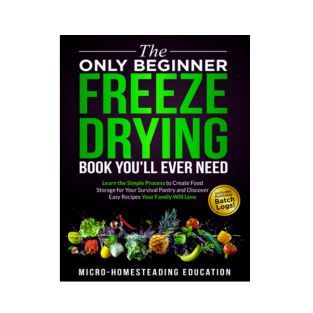
The Takeaway
While some foods may not be suitable for freeze-drying, alternative preservation methods like canning or dehydrating may be more appropriate.
Disclaimer. When you purchase through links on our site, we may earn an affiliate commission (that's how we stay in business). FirstFewFinds may use affiliate links to products and services on retailer sites for which we can receive compensation if you click on those links or make purchases through them. We hope you find the list of our first few finds useful and helpful. Each product on our list has been carefully chosen by our writers and all opinions are our own. Check your choices and enjoy finding exactly what you need!


